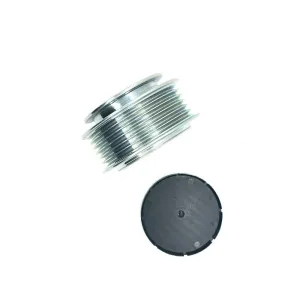Rutile is relatively pure titanium dioxide , generally containing more than 95% titanium dioxide. It is an important mineral raw material for refining titanium , but its reserves are small in the earth’s crust. It has excellent properties such as high temperature resistance, low temperature resistance, corrosion resistance, high strength, and small specific gravity. It is widely used in military aviation, aerospace, navigation, machinery, chemical industry, seawater desalination, etc. Rutile itself is one of the necessary raw materials for high-end welding rods and the best raw material for producing rutile titanium dioxide . Titanium dioxide in rutile is widely used in photocatalyst materials. It is made by adding lanthanide rare earth elements , nano-zinc oxide absorbing materials , diatomite , silicon-carbon chain nanopolymers and other pure natural minerals through scientific preparation and special processing technology. , the pore diameter of its internal pores is between 0.27-0.98 nanometers, arranged in a crystalline manner, weakly charged, and has good photo-oxidation activity; while the molecular diameters of formaldehyde, ammonia, benzene, toluene, xylene and other organic molecules are all between 0.4- Between 0.62 nanometers, and they are all polar molecules . Through the unique capture and adsorption effect of rutile crystal structure, toxic gases such as formaldehyde, benzene, TVOC, etc. are firmly locked and decomposed, which can effectively purify indoor air without causing secondary pollution. At the same time, the effective concentration of negative oxygen ions produced during the purification process reaches about 2000ions.

Relevant information #
Cause and occurrence
#
It is formed under high temperature conditions and is mainly produced in rutile -containing quartz veins and pegmatite veins of metamorphic rock series. In addition, it appears as an accessory mineral in igneous rocks , and is often found in granular form in gneiss ; due to its high chemical stability , rutile is often transferred to placers after rock weathering.
Famous origin #
World-class extra-large rutile deposits in Fangcheng County , Henan Province , China, Zaoyang City , Hubei Province , world-famous producing areas include Binnental and Campolungo in Sweden , Urals in Russia , Kfagero in Norway , Yrieix near Limoges in France, Tyr01 in Switzerland and Austria , and Georgia in the United States , North Carolifonia and Arkansas, the northern part of New South Wales in Australia , the southern part of Queensland, and the northeastern part of Florida in the United States.
Resource overview
#
Rutile deposits in Nanzhao County are mainly produced in the Permian Kuanping Group schist, granulite , hornblende schist and marble . This set of strata starts from Zhuping Village in Yunyang Town in the east and connects with Liuhe in Fangcheng County. The town is bordered by the rutile mining area; heading northwest through Yunyang’s Huoshichao, Luming Mountain, Guanshan , Baliqiao, Xiaodian Yangshulin , Liushan Youfang, Tumen , Linglong Mountain, Zhangzhuang , and Xiaodongzhuang on the outskirts of the city to the county seat Qingfeng Mountain in the east; passing through Luoping Nanshan, Zhouwan, Guangou and other places in the west of the county to the northwest of Mashiping Township , there are large areas exposed, with a total length of about 50 kilometers, the widest point is 6 kilometers, and the narrowest point is 6 kilometers. 1 km away (referring to the mineral-bearing strata). Rutile grade is generally 2%, up to 4.1%. Based on the average width of 800 meters and the mining depth of 50 meters provided by the Provincial Second Institute of Geological Exploration, the county’s rutile ore volume reaches more than 5 billion tons. This set of ore-bearing strata can be divided into coarse and fine types according to the size of rutile particles, of which coarse particles account for 90%.
(1) The coarse-grained rutile ore body is tens of thousands of meters long, usually with 3 layers and up to 6 layers. The ore type is simple, including rutile hornblende schist and plagioclase hornblende schist. The main beneficial component, rutile TiO2, has a maximum content of 4.1% and an average of 2.2%. Rutile is euhedral, semi-euhedral columnar, brown-red, with oily luster , particle size 0.02×0.12mm–0.12×0.8mm, embedded among amphibolite, plagioclase , epidote and other gangue minerals .
(2) Fine-grained rutile ore
The ore body is thousands of meters long and generally has 10-20 layers. The mineral deposits are dominated by rutile hornblende schist, accounting for 60%. Other rutile-containing mica schists , plagioclase schists, and epidote schists follow. Its rutile TiO 2 content is generally 1.76–3.60%, with an average of 2.00%. The basic characteristics of rutile are similar to those of coarse grains, but the grain size is finer, mostly between 0.05–0.1mm.
artificial rutile
#
Artificial rutile, also known as synthetic rutile , refers to a titanium-rich raw material that is the same as natural rutile in terms of composition and structural properties and is produced by using chemical processing methods to separate most of the iron components in ilmenite . Its TiO 2 content fluctuates between 91% and 96% depending on the processing technology. It is a high-quality substitute for natural rutile and is widely used in the production of chloride-based titanium dioxide. It can also be used to produce titanium tetrachloride, titanium metal , enamel products and electric welding. Strips of drug skin can also be used to produce artificial rutile yellow pigments. The main producing countries include Australia, the United States, Japan, India, Malaysia, etc., and the output has exceeded that of natural rutile. The main reason is that the natural rutile reserves are gradually depleted and the output is declining year by year.
Value
#
Rutile is an important metal and non-metal mineral . The titanium metal extracted from it has excellent properties such as high temperature resistance, low temperature resistance, corrosion resistance, high strength, and small specific gravity. Due to the severe shortage of rutile supply in China, the production of rutile titanium dioxide is extremely limited, and most of it relies on foreign imports, with prices as high as more than 20,000 yuan per ton. China’s annual production of rutile is only a few thousand tons, while the demand has reached more than 100,000 tons. In addition to spending huge amounts of foreign exchange on imports, the shortfall still needs to be replaced with expensive artificial rutile . Therefore, relevant departments have included rutile as one of the 14 strategic reserve minerals that my country relies heavily on foreign resources. It should be pointed out in particular that the main consumption area of rutile in China is welding rods , which is still insufficient. Internationally, it is mainly used for rutile-type high-grade titanium dioxide , and the market space for this purpose is huge. According to estimates from relevant foreign-funded enterprises, global titanium dioxide production is about 4 million tons. If China reaches the world’s average consumption level in the next 20 years, the annual demand will reach 1 million tons, of which at least half will be rutile titanium dioxide. According to relevant information, several foreign companies are preparing to set up factories in my country to produce rutile titanium dioxide. In order to obtain a stable source of raw materials, they are also actively contacting the origin of rutile raw materials. In short, the demand for rutile resources will be strong in the future and the market space will be huge.

 April 1, 2024
April 1, 2024 










